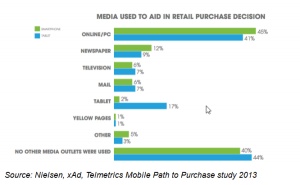
Today’s business environment is defined by the fluidity of globalization. In a short span of time, technology has eroded many of the barriers — both physical and social — that have separated people through the ages. We’ve entered a new world of work where our tools, processes and even people function in “the cloud.” The rigid structures and staffing constraints of brick-and-mortar operations are hobbling hiring managers who must make real-time adjustments to the workforce in order to remain competitive. The MSPs that support them are feeling the same pain. It’s unlikely that this protracted war for talent will be won by the old “boots on the ground” mentality. Those days have passed. Tomorrow’s victors will be the MSPs and employers with their heads in the clouds — rather, the human cloud.
Of Needles and Haystacks
Business leaders can no longer afford to focus locally on their customers, supply chains or workers. As Oracle observed in a 2014 white paper on human capital management, “This includes expanding their customer, manufacturing, service fulfillment or materials supply base beyond current borders to include a presence outside of their locale as well as expanding their potential talent pool.”
Across all industries, we’re still facing a glut of unfilled job orders. Candidates often have the upper hand in negotiations, and those with sought-after skill sets can command greater compensation, incentives and choices in employers. Waiting for candidates to complete applications on job boards or walk through your doors won’t solve the crisis.
If a recruiter happens upon the right candidate at the right price, then a great deal’s been struck. In today’s market, though, the odds of that seem to be dwindling. The problem for hiring managers has become twofold: attracting exceptional workers and finding them in a reasonable timeframe. In some ways, the situation sounds like a torment out of Dante’s Purgatory — searching for that one shiny needle in a massive haystack.
Yet, I’ve always found that analogy puzzling. Of course, the intended metaphor of futility makes sense. It’s just the question of why anyone would engage in it. Why search through all that hay looking for a needle? Wouldn’t it make more sense to grab a magnet and let it draw the needle out of the crowd? This is exactly how employers and MSPs can optimize their hiring strategies — by tasking these initiatives to staffing curators who, like magnets, are quickly finding the best workers in the human cloud.
What is the Human Cloud?
The human cloud borrows its name from “cloud computing,” a digital networking process that enables universal access to a pool of shared resources. It’s a concept MSPs are already familiar with. The majority of VMS tools and other HR technologies they use are cloud-based systems. The human cloud provides a similarly networked structure that connects employers to vital human resources.
As Sarah O’Connor explains in The Financial Times, “Employers are starting to see the human cloud as a new way to get work done. White-collar jobs are chopped into hundreds of discrete projects or tasks, then scattered into a virtual ‘cloud’ of willing workers who could be anywhere in the world, so long as they have an internet connection.”
Businesses have relied on crowdsolving and crowdsourcing as strategies to solve problems using large groups of people in a flexible, real-time environment that overcomes the constraints of physical infrastructures. Generally, that means they reach into the human cloud to find freelancers and independent contractors — oftentimes with the help of online recruitment platforms.
The human cloud is real. In three short years, crowd-based staffing solutions have captured 8.5 percent of the market. In the next five years, they’re poised to grow by an average of 50 percent. Traditional staffing? Not even seven percent. Yet these “human intermediation platforms” are still missing one key ingredient: curation.
Pioneering talent solutions are now bringing out the full potential of the human cloud to enhance and replace traditional staffing models for all business needs and positions — not just one-off projects. In these models, crowdsolving and crowdsourcing transform into robust Crowdstaffing solutions.
Smaller organizations, for example, may not have the resources to locate the best talent for seasonal needs, projects, temporary assignments, part-time work, sudden ramp-ups or vital permanent positions. Internal recruiters have limited talent networks to draw from, and typically rely on a couple of major job boards. For MSPs using traditional placement agencies, these same limitations come into play — sourcing efforts target a narrow pool of active candidates through a few job boards and social networks. Although more resumes arrive, hiring managers continue to struggle with finding the candidates they need.
Until recently, the idea of using the crowd as a staffing model has been limited to theories or exclusive reliance on social recruiting campaigns. Even the young technology tools serve merely to facilitate a process; they don’t, however, support the full servicing and management of the talent. In short, they don’t provide a source of crowd control. A Crowdstaffing model curated by staffing providers delivers all the benefits of crowdsourcing strategies while imposing controls that assure compliance. This is the edge that allows companies to reap the advantages of crowd-based solutions.
Curating the Human Cloud
The human cloud inherently develops crowd-based networks of skilled talent and independent recruiters. Unlike online recruitment solutions, the process is supported by staffing curators to ensure complete labor compliance, quality and customer service. The model streamlines recruiting and hiring processes for time-strapped hiring managers and MSP program teams.
The recruiter and talent networks built within the human cloud open the doors to a vast array of sourcing tools, techniques and people, while reducing overhead. Whether you’re running your own business or leading an enterprise-wide MSP program, that’s crucial to maintaining your margins while receiving the workers you need — in the fastest amount of time.
There are obviously many nuances and benefits to this kind of a solution, yet they don’t ignore the persistent problems that hiring managers and MSPs encounter. In fact, they remedy them right out of the gate. Crowdstaffing models enable staffing curators to conquer the three biggest problems employers and hiring managers face when seeking exceptional workers: job descriptions and postings, market intelligence, and candidate development.
Optimized Job Descriptions and Postings
The first step in improving applicant response is to optimize job descriptions and postings. Many job seekers state that applications are too convoluted, complex and repetitious. Job descriptions, they feel, are not detailed, unique or specific enough to attract their attention. Then there’s the issue of where to post them. Job boards are no longer the destinations of choice for young professionals.
Staffing curators with a command of the human cloud have a tremendous advantage over traditional recruiters in terms of connections and insight: their recruiters represent countless companies and are deeply entrenched in all hiring platforms, from standard job boards to social media, associations, groups, community organizations, online marketplaces and new technologies such as Tinder-style recruiting apps (Jobr, Switch, Weave).
Staffing curators, with their resources and tools, know how to draft compelling and socialized job descriptions that focus on cultural fit, employment brand, opportunities and the most relevant qualifications. They find the best talent quickly and approach them with a compelling story. What hiring managers and MSPs get back is a qualified, engaged and meaningful shortlist — in a dramatically reduced timeframe.
See the Entire Marketplace Through the Human Cloud
In this buyer’s market, competition is fierce. Candidates have more options and are taking the most appealing positions. Without a vivid awareness of the competition, hiring managers lose their strategic edge. As Benjamin Gilad of the Harvard Business Review notes: “The first requirement for being competitive is to know what others in your space are offering or plan to offer so you can judge the unique value proposition of your moves. This is just common sense. The second requirement is to anticipate response to your competitive moves so that they are not derailed by unexpected reactions. That’s just common sense, too.”
Gilad explains that companies spend millions trying to acquire competitive market intelligence through “armies of vendors” and technologies — $ 20 billion annually, according to some estimates. And yet few of those companies use that information.
In a Crowdstaffing model, staffing curators develop diverse staffs of independent hiring experts who bring a wealth of past industry and organizational experience to the process. By culling recruiters from the human cloud, staffing curators provide a wider, more comprehensive view of the overall market to clients and MSPs.
These professionals have worked with a variety of hiring managers across industries and job categories, enhancing their knowledge of real-world job needs, position requirements and applications. Through their breadth of insight, disparate experiences, global reach and perspectives from working with numerous programs, they understand the competition hiring managers face — and how to position them to rise above. Without spending a fortune on research, hiring managers and MSPs receive consultative recommendations on how to make their positions stand out, offer the most competitive rates for top talent, and promote benefits or incentives that entice quality workers.
Developing Candidates, Not Just Placing Them
Today’s talent seek environments that mesh with their values, support needs, work-life goals and ongoing development. Placing them in business environments that are conducive to these goals leads to the success of the worker and the employer.
When recruiting top talent for the skills employers need now, and in the foreseeable future, staffing and recruiting professionals are concentrating on fit — sourcing workers based on matches to established skills and experience. And they are providing them with unique resources to enhance the quality of their job searches, their integration to new business cultures and their careers.
Skilled recruiting professionals are adept at securing candidate acceptance for offers. This is because they’re spending more time and energy to bait the hook, work the line and interact with prospects. Recruiters in a Crowdstaffing model take this a step further by coaching the right candidates, helping them develop compelling personal brands, guiding them through the hiring process, providing critical feedback and continuous improvement suggestions, and even counseling them on approaches for negotiating offers or counteroffers.
These workers come to organizations satisfied and eager to contribute. Hiring managers and MSPs have greater assurance of lasting contributions from committed talent. Even for contingent assignments or project-based engagements, retention is paramount to performance, cost efficiencies and timely successes.
Draw Out the Power of the Human Cloud
There’s a reason why cloud computing defines the 21st century’s digital processes: it’s elastic, efficient, coherent, on-demand and leverages economies of scale. Why shouldn’t the human cloud define this era’s staffing practices? There is strength in the crowd. It allows us to maximize the effectiveness of the shared resources for programs of any size. The crowd also optimizes our access to critical resources and enables us to dynamically reallocate talent on demand. A workforce model that seizes the advantages of the human cloud helps clients and MSPs run faster, leaner and at higher levels of productivity.
Keeping one’s head in the clouds used to imply a lack of focus. Today, it means concentrating on efforts that fuel business growth instead of patching holes in aging infrastructures.
Business & Finance Articles on Business 2 Community(89)






